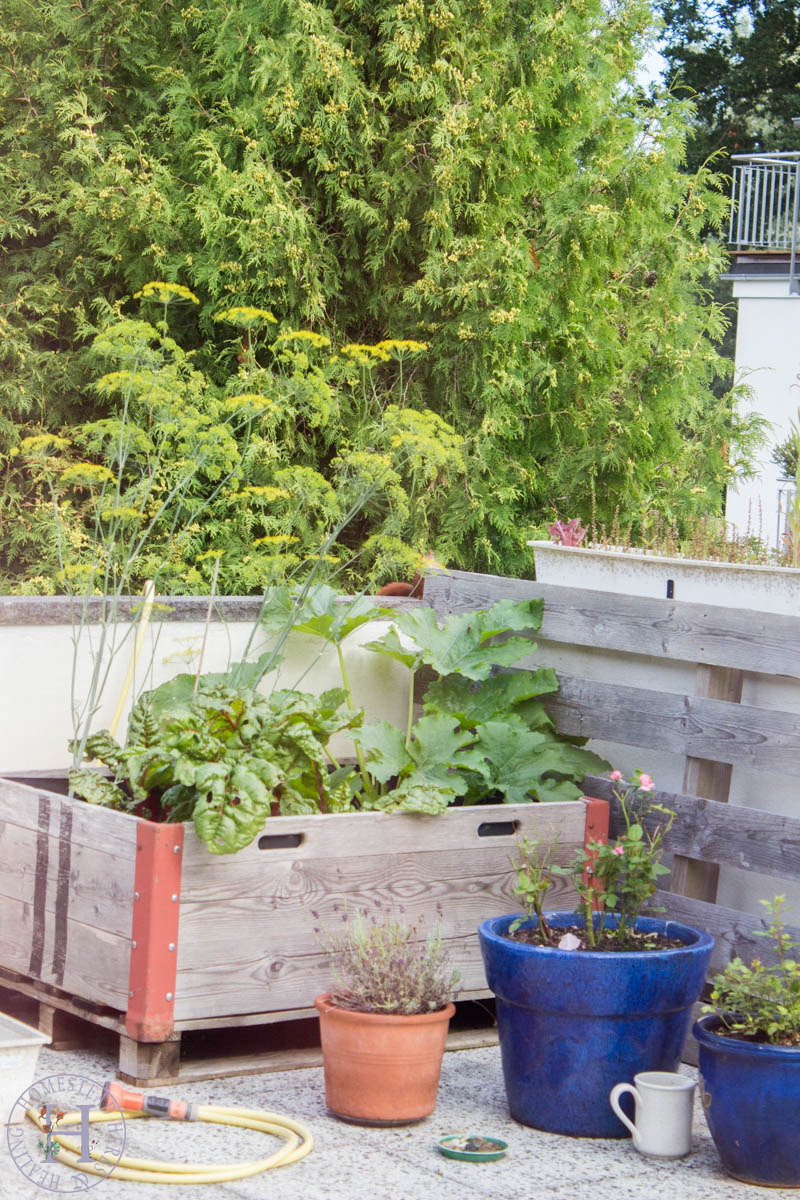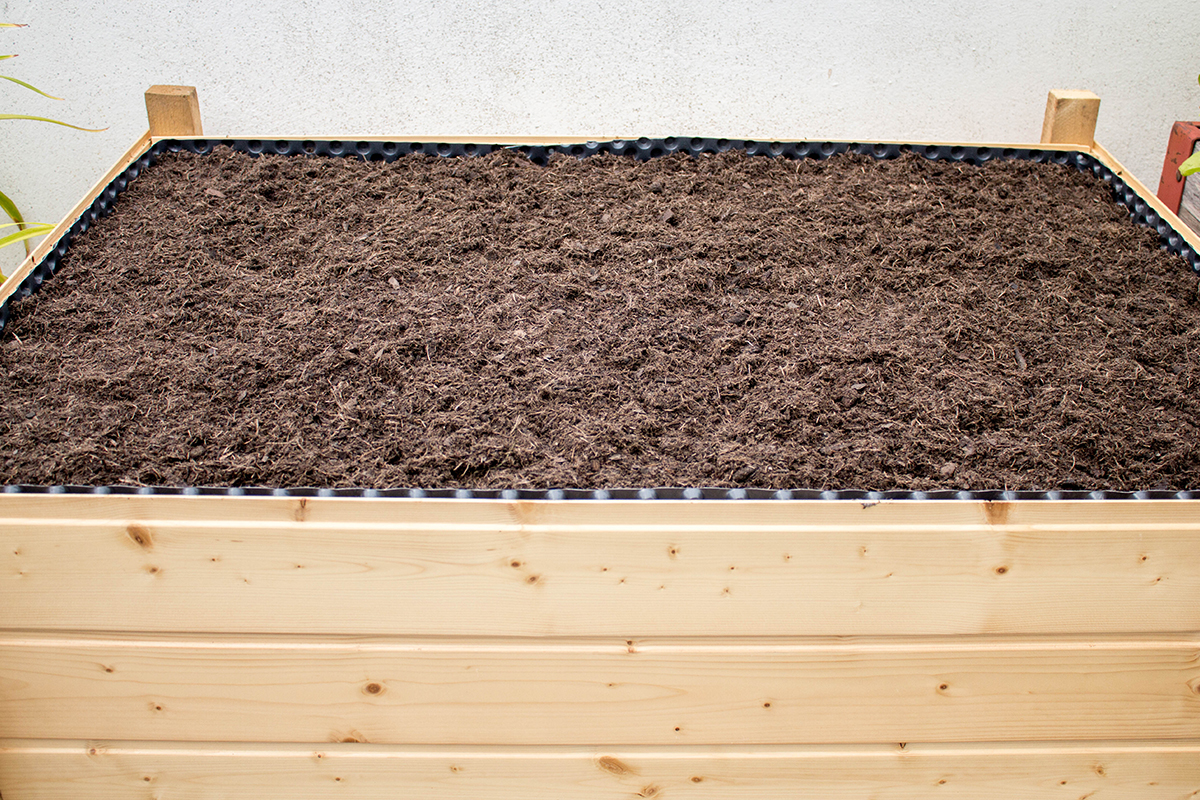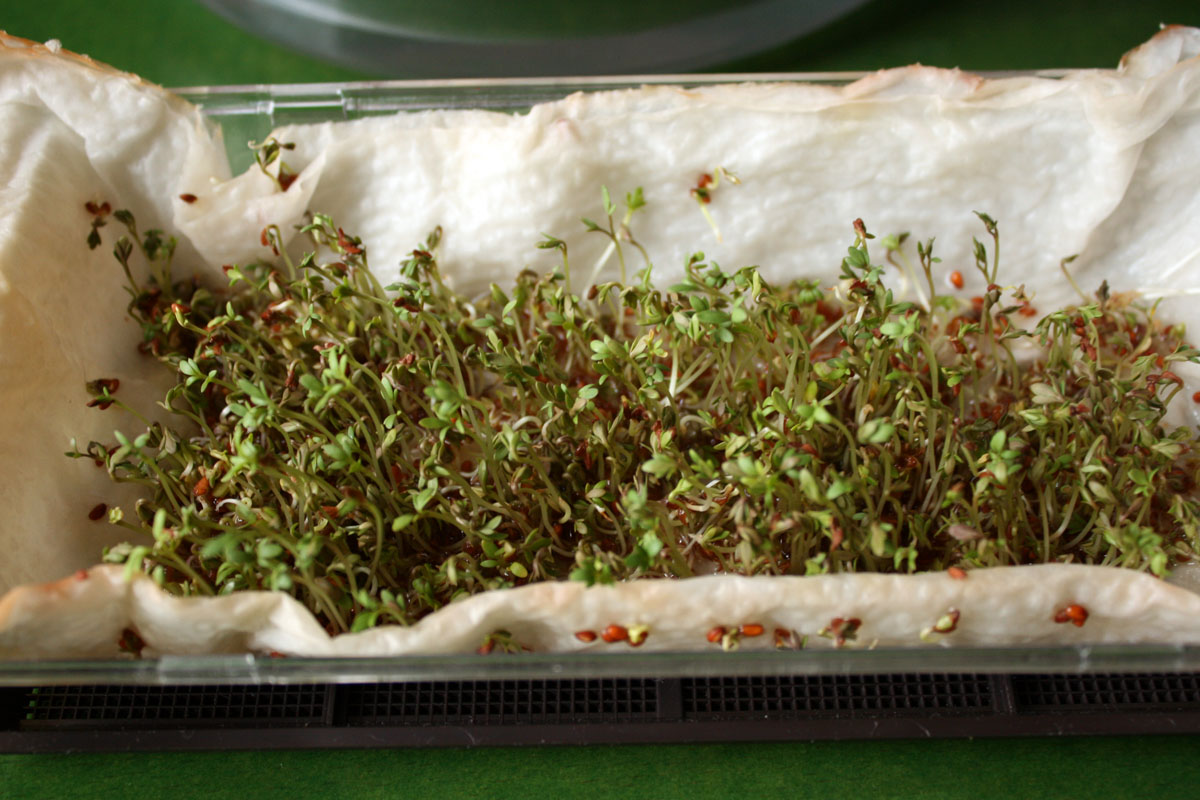reading time: 14 min
 Can you spot our furry little neighbour?
Can you spot our furry little neighbour?
For the longest time my dream was (and it still is, don't get me wrong) to live in a small house – a cute cottage perhaps – with a big garden that has lush rose bushes, berry bushes, apple trees, wild flowers, medicinal herbs, loads of homegrown vegetables, and enough space to keep 4 chickens, 2 dogs and my 3 already-existing guinea pigs.
Oh, and ideally the property adjoins to a horse pasture. Thank you.
I saw people like Rachel Talbott with her dogs and cats and goats and ducks and whatnot, living the country farm life, and Carrie Rad with her magical piece of land and her precious pets, her amazing aesthetics, and not to mention her dream relationship, and Madeleine Olivia who is a pro at home-renovating and manages her gorgeous Georgian country farmhouse in the Cornish countryside (jelly!), and Deanna from Homestead & Chill who not only manages to create and care for the most amazing vegetable and flower garden, fruit orchard, chickens, cats, website, but also ferments her own food, makes and sells her own homemade products such as balms and salves, sourdough starter, baths salts etc. – and all that with just the help from her husband!!
As you can probably see, my expectations of what homesteading looked like – and what I wanted my own life to look like – were sky-high.
I needed a reality-check.
So what is homesteading, really?
According to Merriam-Webster, the verb homestead means "to acquire or occupy as a homestead" – which in turn refers to "the home and adjoining land occupied by a family". Homesteading, according to Wikipedia, "is a lifestyle of self-sufficiency. It is characterized by subsistence agriculture, home preservation of food, and may also involve the small scale production of textiles, clothing, and craft work for household use or sale. (...) Homesteading is not defined by where someone lives, such as the city or the country, but by the lifestyle choices they make."
In other words, whether you are a "homesteader" or not is not determined by where you live (and whether you own several acres of land and a dozen cows), but rather how you live.
In my blog post »Courage, Dear Heart« is now »Homestead, Herbs & Healing« from a few months ago I write that the word "homestead" on my blog name doesn't really reflect my current reality, but is rather an "affirmation" of what I want to achieve in my life. It's almost hilarious now to realise that I was already living a homesteading life – just not on a large scale like the amazing people I mentioned at the beginning of this blog post!!
And I didn't even realise it.
 |
My homesteading vision board
|
Why homesteading?
There are a multitude of reasons why people decide to homestead. There seems to be some kind of a "wave" over the past few decades of people returning to a more "traditional", more slow-pace type of living, both in urban and suburban settings, like ours, and in the more common rural setting. Others, as I understand it, strive to be more or less completely self-sufficient and independent from the system.
As for me personally, I am drawn to a homesteading lifestyle for several reasons:
- I simply enjoy working with my hands, digging my fingers into the dirt, or kneading a soft dough, and feeling with all my senses (as opposed to working on a desk all day long, which is what my current daytime job requires)
- Working in the "garden", aka our roof terrace, living more seasonally and going wildcrafting re-connects me with nature and our surroundings, which is very grounding and soothing for me
- There is something very rewarding in harvesting the fruits of your labour, literally
- I love tending to my indoor and outdoor plants, my pets, my home – and to me, it is just much more rewarding to work for myself in that way, and to spend time on my own projects/novels instead of working on other people's projects/novels (as I have been doing as an editor over the past 4 years) which have no meaning for me and actually dry up my creativity
- I love working from home and, like I said, on my home (I've talked about this in my article on Why Mrs. Midwest Is No Longer My Role Model – I actually enjoy most of the homemaking tasks of a "traditional" housewife who works from home and takes care of the household, minus the sexist attribution of gender roles like housekeeping being "an integral female trait" (geez!), and also minus the cooking, which I'm not as fond of)
- While my goal is not self-sufficiency, I do think it's quite handy to be not entirely reliant on supermarkets and wholesale companies either (as the pandemic probably made us all realise)
- Knowing how to grow vegetables, how to cook from scratch, how to sew by hand or by machine, how to fix a dish washer, how to forage for edible wild plants
etc. are valuable skills that will make you more wordly-wise and also
more confident about your place in this world, because you kind of know
and understand what is going on around you, if that makes sense
- My boyfriend and I also love thinking of more sustainable, creative solutions, for example how to include renewable energy sources such as solar, water and wind power in our life, to live as sustainably and eco-friendly as possible
- In a nutshell, I crave a more simple, more hands-on lifestyle in close touch with nature where I still have enough flexibility to write on my blog, work on novels and short stories, and just try out a bunch of different things that interest me, from fermenting more foods to doing macramé, making my own ceramics, or even eventually selling homemade goods such as soaps, lip balms, bath salts etc. (not yet though ☺️ so far I'm just selling kombucha SCOBYs, sourdough starter, and plant cuttings and seedlings, which is also fun)
 How my journey started: microgreens sprouts in the kitchen, and tomato plants in the bedroom of my shared flat!
How my journey started: microgreens sprouts in the kitchen, and tomato plants in the bedroom of my shared flat!
How I homestead on a small scale
So I live in the suburbs with my boyfriend, in a flat so to speak, or rather the top half of a detached house in the outskirts of my home town in Northern Germany. We are honestly very lucky to live here, and we couldn't have afforded it if we didn't share the house my boyfriend's sister and her husband. It's not the dream home I described earlier, but it's definitely a privilege to live in a 100-square meter flat with a balcony and a roof terrace where we keep two raised garden beds and a collection of planters – and technically we can use half of the garden which has a bunch of beautiful trees and shrubs, which we don't really use because we can only access it by using the entry door on the ground floor for which we need a key. And also because we're then directly in front of the living room of our neighbours.
Anyway. So this is what we're working with.
Cooking from Scratch
Looking at my blog content, this is no surprise. Cooking and baking are some of my favourite ways to homestead. We have four monthly meal plans for each season, and we almost never order food or go out to eat, perhaps five times a year.
If cooking is a challenge for you, learn to make at least three or five meals that you enjoy! If you don' know where to start, look at your favourite meals, and try different recipes to make at home until you find the one that you can master :)
Or you could make your own snacks every now and then, or make your own granola for a change.
A couple of things that I do not buy any more, but make myself, are smoothies, green juice, and cake. Not only do you know exactly what goes into your meals if you make them yourself, but it's also that much cheaper! And often times – even more delicious ...
Growing Garden Basics
When I was still living in a shared flat with four other people, I planted a windowsill herb garden with things like mint, thyme, lettuce, chives and parsley as well as two tomato plants. Yes, I grew those tomatoes indoors! (see above) I also sprouted microgreens indoors from time to time. So you don't even need a balcony, not to mention a garden, to grow a couple of herbs to enjoy in your meals.
Now that we do have a balcony and a roof terrace, for which I am very grateful, we have more space to grow food. Great beginner-friendly plants we grew in the first year were lettuce, mint, and Swiss chard, as well as tomatoes and zucchini in our second year. This year we have even more planters available, including two DIY raised garden beds, in which we are growing two varieties of strawberries, radishes, carrots, Swiss chard, lettuce, tomatoes, zucchini, Hokkaido pumpkin, cucumber, green onions, dill, basil, mint, oregano, parsley, sage, tarragon, and the tiniest blackberry that can survive in a little planter. Lastly, we have an apple tree, a plum tree (that doesn't produce much fruit) and a raspberry bush in the garden.
For this late summer, I'm also starting kohlrabi and red cabbage inside, and we're going to direct-seed more lettuce, Swiss chard, radishes and our first batch of winter lettuce later on.
This might sound like a lot, but most of those are just one single plant per vegetable, so it's just enough to spruce up a few meals and have fun digging your hands in the dirt :)
If you are just starting out, I recommend planting what you like to eat. So what are your most-used vegetables when cooking? Grow those! (Unless it's something very exotic and fussy like, say, artichokes which are not be the best for beginners.)
Don't forget to determine your hardiness zone to ensure gardening success! For reference, I live in zone 7.
 Impressions of this year's garden beds: strawberries (and dill),
cucumber, carrots, lettuce, Swiss chard, basil (in the midst of zucchini, calendula, and oregano).
Impressions of this year's garden beds: strawberries (and dill),
cucumber, carrots, lettuce, Swiss chard, basil (in the midst of zucchini, calendula, and oregano).
Growing Medicinal Herbs & Flowers
Flowers and herbs don't just look pretty, they can also be used to benefit your garden (by attracting pollinators and possibly deterring pests) and to use them for medicinal purposes. Great examples are calendula, echinacea, chamomile, lavender, St. John's Wort, valerian, lady's mantle, yarrow, meadowsweet, elecampane, comfrey, and many, many more.Right now I'm growing and harvesting lavender, calendula, sage, greater celandine, lady's mantle, lungwort, and aloe vera (indoors). I'm also drying mint leaves for tea, and use my fragrant roses for things like rose water, bath salts, and yoni steaming.
Making Skin Care & Beauty Products
Speaking of roses and calendula, these are not only amazing healing plants, but can also be used to make your own beauty and skin care products. Some of the first homemade beauty products I made were hair masks, facial masks, lip balm, body scrub, and body lotion bars. By now, I also make my own clay shampoo, rose water, herbal hair rinse, hair oil, yoni oil, toothpaste, soap, sunscreen, beard balm for my boyfriend, and more.
Of course, there are also a bunch of non-beauty related household products you can make such as your own cleaning agents (so far I really only make my own yoga mat spray, lol), or your own organic mosquito repellent, or your own fertilizer – I currently make mine using banana peel, comfrey leaves, or nettles.
Preparing and Preserving FoodWhether you are growing your own food or not – preserving food is definitely something to look into. If you have a neighbour or a mum that has a fruit tree, they will probably be very glad to share their fruits with you. For example, last year we got tons of pears from my mum's garden, as well as apples from my mum's neighbours, and plum's from my boyfriend's aunt – and so I spent a couple of hours in the kitchen making apple butter, pear sauce, plum crumble, and plum chutney (click here for the recipes).Or you are hit by the annual "zucchini flood" from your own garden, and need ways to process them. It's good to have a few recipes at hand to make so you don't get bored from the same stuff again and again. If you don't know what to make with your harvest, but don't want it to go to waste, just wash, chop, and freeze. That way you're more flexible in the way to use them later on.Other ways to prepare and preserve your food could include dehydrating fruits and veggies, canning tomatoes, making your own homemade vinegar, making your own vegetable broth, etc.If you don't have your own veggies you need to preserve, you can buy seasonal foods in bulk when they are abundant and cheap, and then preserve them for the winter months when fruits and veggies are more expensive. In my case, I've been going to a pick-your-own strawberry farm almost every year for the past 10 years or so, and came home with a bucket of strawberries which I froze or turned into smoothies. Same goes for the pick-your-own blueberry farm that we discovered last year (we made part of it into a delicious cake, ate another part of it, and froze the rest).
Fermenting Food
Fermenting is another traditional way of preserving food that also comes with the benefit of gut-healthy lactic acid bacteria. For example, you could ferment veggies (e. g. zucchini, peppers, green tomatoes, radishes, cabbage or cucumber) or fruits like lemons as a way to use up excess harvest. You can make kimchi, apple cider vinegar, etc.
For the past few years I've been homebrewing kombucha, and ever since this year I'm also baking sourdough bread every 1-2 weeks, and making my own yogurt. As of yet, I haven't done any pickling or lacto-fermenting of vegetables, but I'm very curious to try it!
Foraging Wild Foods
Wildcrafting has become one of my favourite activities over the past three years! Even long before that I started out with wild apples and wild blackberries, and then fell in love with stinging nettle, elderflower, meadowsweet, ground elder, dandelions, and tree spinach. As of now, my list of wild foods that I use for cooking or to make beauty products etc. includes more than 30 plants, and I'm constantly adding more to my "list" ...If you are just starting out, I recommend sticking with plants that are easy to identify, such as nettles, dandelions, and daisies, and exploring from there.Great online resources that makes you want to go foraging like a little herb witch and create amazing recipes (besides my own blog of course 😜) are Gather Victoria, Grow Forage Cook Ferment, and for my German readers Zauberkräuter ("magic herbs").Learning Handiness SkillsIn my opinion, homesteading also involves the maintenance, mending and possibly building of your home. That could mean building or repairing a fence, building a tool shed, or teaching yourself skills like plumbing, basic carpentry, or sewing by hand (to fix a ripped pair of jeans, or to make your own pillow cases and whatnot). Depending on your homestead, you might also need to operate heavy machinery, or learn how to cut down (or even just prune) trees. It could also mean installing a solar panel, or chopping firewood, or harvesting rainwater or grey water to use around your homestead.Or in my case, it means DIY-ing furniture like the bookshelf we made a couple of years back, the DIY pallet sofa that is not quite finished yet, two wooden guinea pig cages, or the homemade barn door that my boyfriend made me for my home office, as well as the flower box we made from an old wooden pallet, the new raised garden bed and the worm bin we are currently building. I also make little things like the DIY bird feeder and the air-dry clay giraffe planter.This category can also be extended to making your own clothes, your own jewellery, your own decor, etc. Anything that starts with "making your own ..." counts 😉
 Some of our DIY home projects: raised garden bed, barn door, bookshelf, and flower boxes (using an old wooden pallet).
Some of our DIY home projects: raised garden bed, barn door, bookshelf, and flower boxes (using an old wooden pallet).
As you can see from my own examples, homesteading definitely doesn't need to involve your own land – and not even a garden, heck, not even a balcony! Where ever you are, you can "homestead", if you like. If that means growing a couple of herbs in your kitchen to put into meals, making your own deodorant, or foraging for wild nettles in the spring, then that's great!
And if it means owning a dozen of cows, making your own milk and cheese, growing an acre of corn, or having a cellar filled with homemade goodies that get you through the winter, then that's awesome too!
What ever you do, don't compare yourself to strangers on the internet, like I did with the amazing ladies above 💛
♥
Maisy


























































